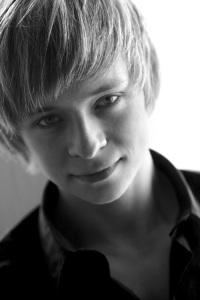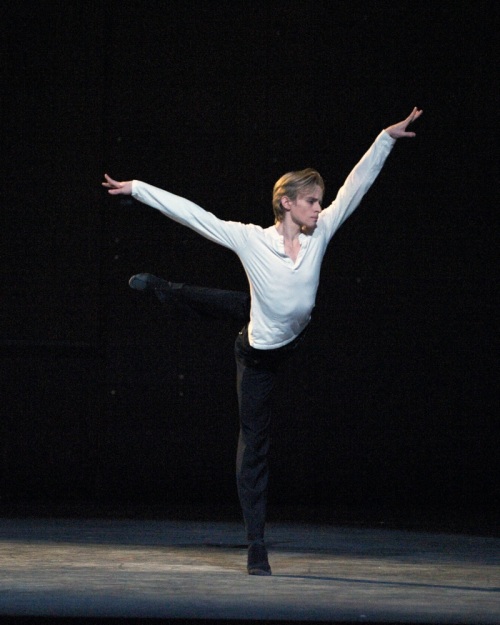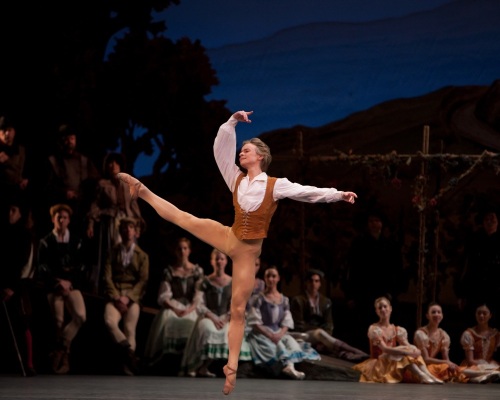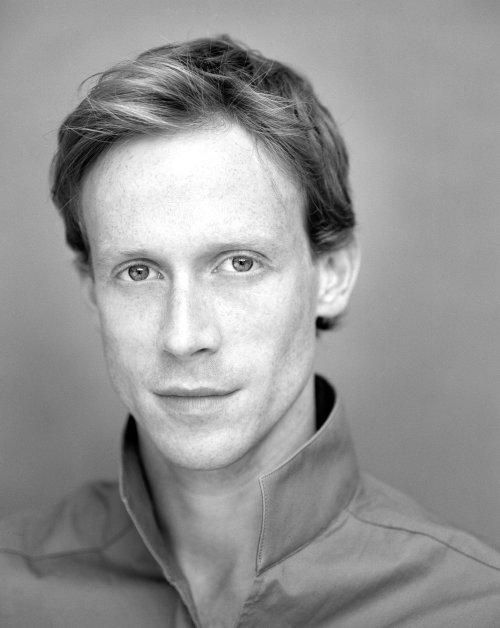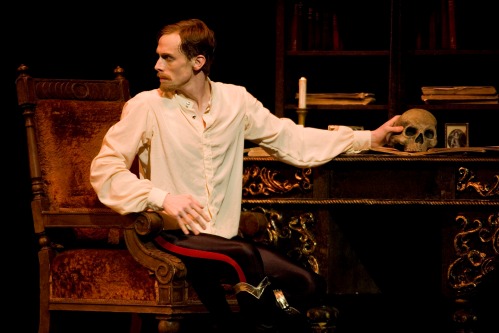If you follow dance on the internet chances are you will have heard of Daniil Simkin. He is the whiz kid (not just dance-wise but also tech-wise) who arrived last year from Vienna State Opera to stir some fresh buzz into American Ballet Theatre’s soloist ranks. His virtuoso dancing and various gala appearances, including the prestigious World Ballet Festival in Japan, have drawn a solid fanbase from every corner of the globe and Daniil draws on multi-platform social media and Web 2.0 to stay in touch and connect with all these fans.
We caught up with Daniil ahead of ABT’s trip to China later this week. He was kind enough to answer our questions about his ABT repertoire, his social media projects and to share his plans for the upcoming gala evening “INTENSIO” in Athens this December.
You are now in your second season with ABT. Can you tell us how it’s going? Any new roles/debuts on the horizon? Which roles do you expect to dance in the upcoming tour to China?
DS: So far my second season has been great. I will be touching a lot of new ground and will be expanding my horizons during the MET’s spring season, dancing in Twyla Tharp’s Brahms Hayden Variations, the great Jerome Robbins ballet Fancy Free, in Sir Frederick Ashton’s The Dream (as Puck), probably in Paul Taylor’s Company B, in addition to dancing my current roles in our classical repertoire. I have also been understudying a few Principal roles in the classics since I have performed some of them with other companies, but I have no scheduled performances in those yet.
During ABT’s tour in China I will be performing ‘Everything doesn’t happen at Once‘ by Benjamin Millepied and ‘One in Three‘ by Aszure Barton, both created for ABT and premiered during its Avery Fisher Hall season this Fall. Both pieces are extremely different, but very enjoyable to perform. I am very much looking forward to the tour, especially because it will be my first visit to China.
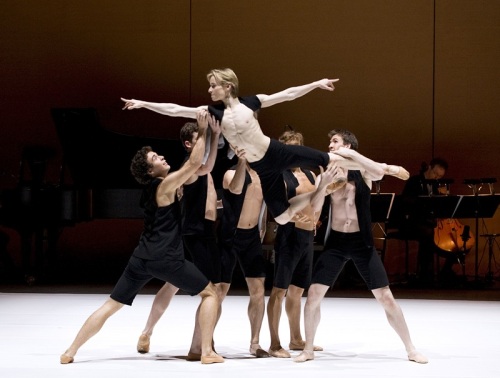
Daniil Simkin in Benjamin Millepied’s Everything Doesn’t Happen at Once. Photo: Gene Schiavone / ABT ©
Speaking of the Far East, can you briefly share your experiences at the World Ballet Festival in Japan this past summer?
DS: The World Ballet Festival was an unbelievable experience. Just the fact that I was sharing the stage with people like Sylvie Guillem, Aurelie Dupont, Manuel Legris, Alina Cojocaru, Johan Kobborg, Marianela Nuñez, Svetlana Zakharova, Leonid Sarafanov, Tamara Rojo… It gives me goosebumps. One of the most memorable moments was probably receiving corrections & pointers from Sylvie Guillem. Luckily my first show, a full-length Don Quixote, happened at the very beginning of the festival. Not everybody was there yet so I was able to concentrate on my show without thinking too much on who might be watching in the audience!
You are one of few classical dancers currently using social media to connect with your audience. How did you get into it and what are you trying to achieve in all these different platforms (Twitter, Facebook, YouTube, etc.)?
DS: I have always been interested in computers and any technology-related gadgets. Some boys are drawn towards cars and motorsports, whereas as a kid I was drawn to computers, science and gadgets. I spent more time on my father’s first computers than he ever did. Then came the Internet and its ever-increasing presence in our lives. Luckily I was born in an age when everything was just starting. I was designing personal websites by myself in my spare time and once codecs for videos became more efficient I put in there videos from my competitions as downloadable clips.
Then one day I saw one of my clips in somebody’s MySpace page and found out somebody else had uploaded two of my clips and was selling a DVD of it on YouTube without my permission. I was shocked. Because of that I decided to put my own videos onto YouTube, otherwise others would. I also started to use MySpace after my competition in Jackson (2006) since it was the perfect way to keep in touch with a lot of the US dancers I had met there.
From there it was not a long shot to Facebook and Twitter. I was the second professional dancer to use Twitter, after San Francisco Ballet Principal and good friend Maria Kochetkova. I had fun updating my status and therefore kept doing it, until twittering was the next popular thing for pretty much every and anyone. Nowadays all of my platforms are interconnected, which means that my profile and my work can be discovered through different channels. If somebody gets to know a little bit about what I do from watching my YouTube videos, this person can then have a full picture through my Facebook page, Twitter and my personal website, which is currently in the process of being upgraded to a new, fully integrated, Web 2.0 version.
With all of this, my aim is to demystify our work as ‘professional dancers’. Our profession is surrounded by clichés and prejudices from misinformed people. I am trying to show that we dancers may be a little different from everybody else, but in essence we are human beings with routines, likes and dislikes, social lives and passions like everyone else. In short, we are not so different or more special than the office worker sitting in a cubicle, we just have different workspaces.
People in dance talk about the need to promote ballet more widely and yet, few actually do it. Why do you think there are so few dancers/choreographers in social media channels and have you encouraged any of your colleagues to use them?
DS: To quote a twitterer “I must do something” always solves more problems than “Something must be done” (Author Unknown). In the end, we as the dance world ARE the ones who have to change, not our surroundings, the media, etc. In my opinion classical dance is not more popular because in the dance world we tend to be more conservative than innovative. We have to change our mentality and prejudices towards copyright, media, replace them with openness and transparence. Only when the majority understands that this is the key to the future, will we succeed. In my opinion protectionism in these days of Internet/Web 2.0 can be destructive. That’s my two cents.
I have been encouraging some of my colleagues to participate in the Web 2.0 movement, but unlike most of the other professional fields, ballet is very physical and is very little connected to technology in its everyday routine. Therefore dancers are not as open to embracing the possibilities of technology as they could be.
What do you think major ballet companies should be doing to draw new audiences and to keep engaging them?
DS: The same things I mentioned before. Project more openness and a certain fearlessness in their PR. Fear is the biggest enemy of innovation and it prevents them from progressing, from opening the art form towards new audiences.
It is clear to me that the artistic mission of ballet companies should be to maintain a healthy balance between proven classics and innovative work with new ballet choreographers. Basically it is guarding a basis while nurturing experimental directions, but in reality, only big scale companies have the luxury to do both these things. The smaller the company, the harder it will be – budget and quality wise – to maintain a high level of both. Which doesn’t mean it is not a goal to strive for or one that’s unreachable.
Can you tell us more about the gala you are organizing in Athens this December? Why this particular location and who will be guesting?
DS: After performing in the ‘Svetlana Zakharova & Friends’ gala in Athens last year I was approached and asked to organize a similar event. The Gala evening is called ‘INTENSIO – An International Ballet Gala Presented by Daniil Simkin’. ‘INTENSIO’ is a play with the words ‘intense’ and ‘intention’. It describes the evening quite well in that it is not going to be just a clean dance evening, we are trying to merge different media into a ‘mashup’ for an entertaining evening. My father is in charge of the stage design and video projections specifically designed to support the dance on stage, as some pieces will be integrated with video. It is an exciting project for me and a new approach towards the usual ‘gala’ evening you see so often.
So far the following dancers will be performing (+ another couple to be announced)
- Daniil SIMKIN – American Ballet Theatre
- Alina COJOCARU – The Royal Ballet
- Lucia LACARRA – Bayerisches Staatsballett (Munich)
- Cyril PIERRE – Bayerisches Staatsballett (Munich)
- Daria KLIMENTOVÁ – English National Ballet
- David MAKHATELI – The Royal Ballet
- Irina KOLESNIKOVA – St. Petersburg Ballet Theatre
- Semyon CHUDIN – Moscow Stanislavsky Ballet Theatre
- Marie LINDQVIST – The Royal Swedish Ballet
- Dragos MIHALCEA – The Royal Swedish Ballet
How do you see your career evolving 5 years from now, what would you like to have achieved & which roles do you aspire to dance?
DS: I tend not to look too much into the future. Life experience showed me that it is healthier and better for me to enjoy the things I have now and share the beauty of life right here, right now. Having said that, dancing the Principal classical repertoire is one of my priorities in the near future and I would also love to go back to school, at least part-time or to learn remotely. Right now I am too busy and I don’t have enough time, but hopefully in the future I will be able to do that.
What’s in your ballet bag?
DS: Different things for different occasions… If I am running from studio to studio rehearsing, then it would be:
- Water with added Magnesium
- Different kinds of warm ups to keep as flexible and as warm as possible (normally consist of 4 or more items+ warm up boots or warm up socks)
- Headband to keep my hair in place (which tends to be long enough to bug me)
- Sansha Pro 1C skin colored ballet slippers
- Toe spacers for my big toes + medical tape to stick them
- iPhone + a2dp Bluetooth Nokia wireless headphones
- 2 different stretching bands: One from Chacott to stretch my split and extensions and one Thera-Band to warm up my feet
Last but not least, COOKIES to keep my bloodsugar and mood up and to give me an always needed sugar-fix!
More about Daniil:
